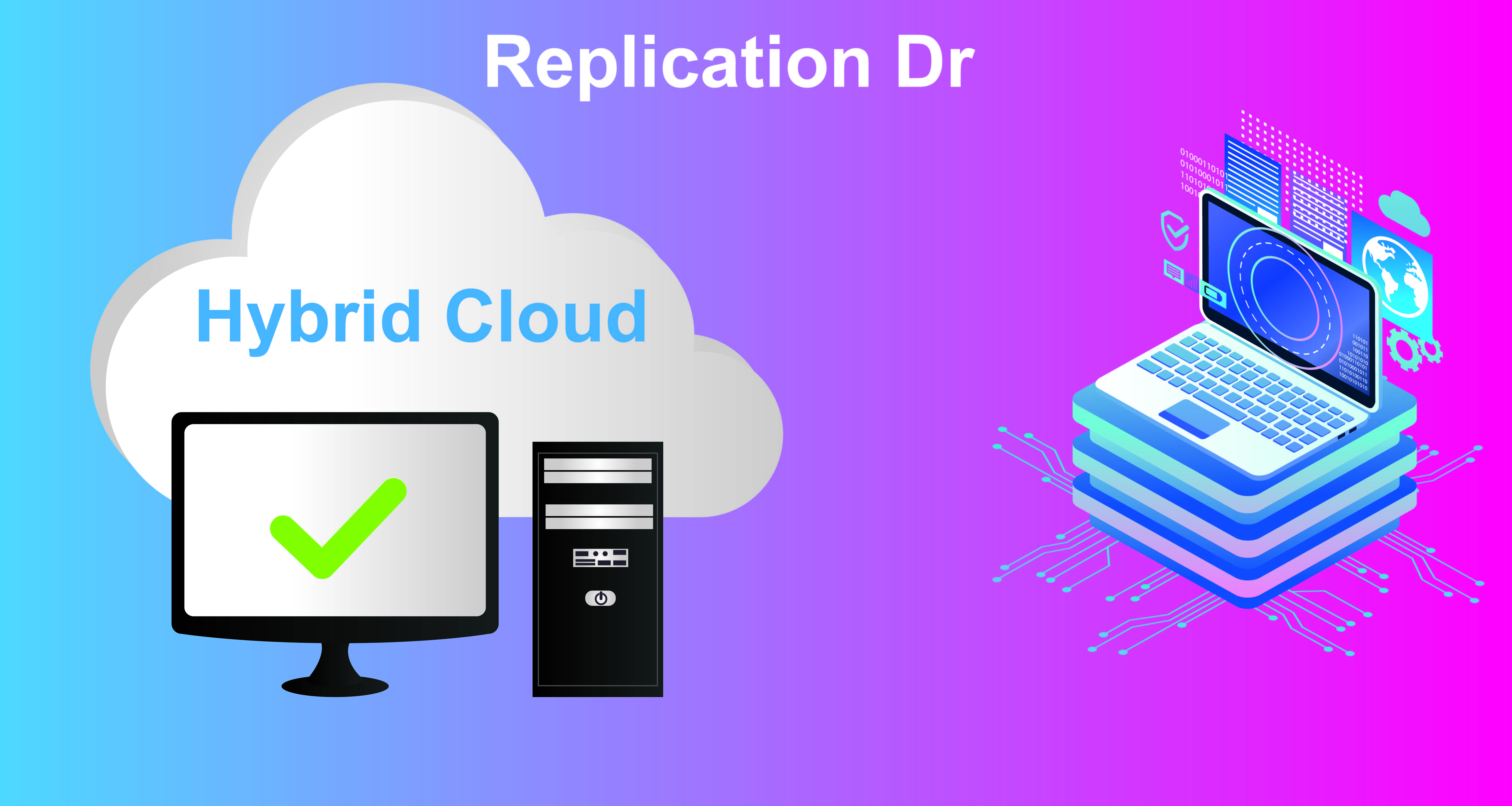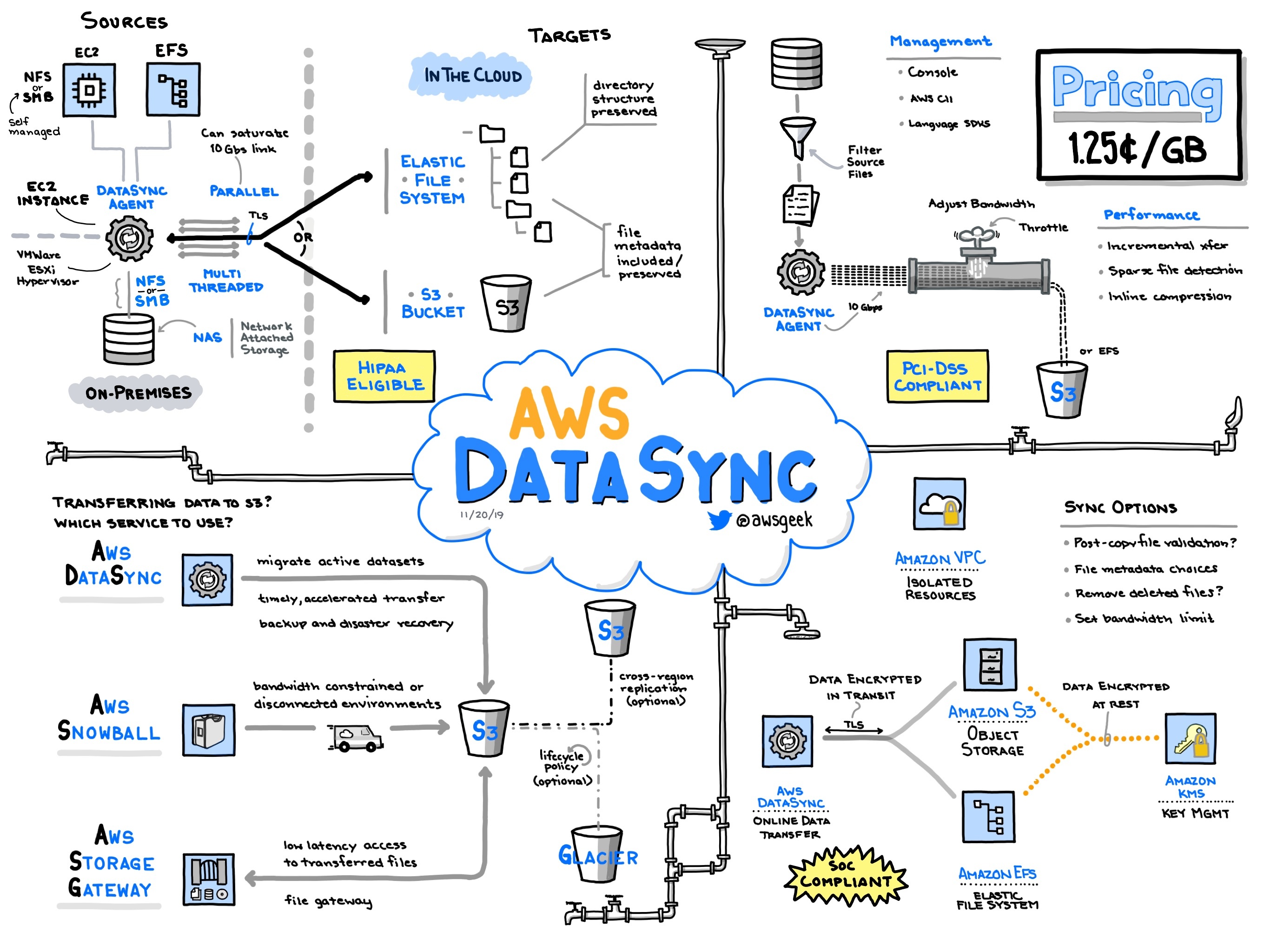The Role of Replication and Synchronization Tools in Cloud Computing
Replication and synchronization tools in the cloud play a pivotal role in modern computing environments, ensuring seamless data access, collaboration, and consistency across various platforms and devices. These tools help maintain data availability and redundancy, preventing data loss and minimizing downtime. As businesses increasingly rely on cloud-based services, the need for efficient and reliable replication and synchronization tools becomes paramount.
Cloud-based replication and synchronization tools offer several advantages over traditional on-premises solutions. They provide scalability, enabling businesses to handle growing data volumes without investing in additional infrastructure. Moreover, these tools offer enhanced security features, such as data encryption, access controls, and activity monitoring, ensuring that sensitive information remains protected. Real-time data synchronization is another critical benefit, allowing for instant data updates and collaboration among distributed teams.
When selecting replication and synchronization tools in the cloud, it is essential to consider several key features. Compatibility with existing systems and applications is crucial, as is ease of use and integration with other cloud services. Scalability, security, and real-time data synchronization are also important factors to ensure seamless data access and collaboration across various platforms and devices. By carefully evaluating these features, businesses can choose tools that best meet their specific needs and requirements.

Key Features to Consider in Cloud-Based Replication and Synchronization Solutions
Replication and synchronization tools in the cloud are essential for maintaining data consistency, availability, and redundancy. As businesses increasingly rely on cloud-based services, selecting efficient and reliable tools becomes crucial to ensure seamless data access and collaboration across various platforms and devices. When evaluating cloud-based replication and synchronization solutions, consider the following key features:
- Compatibility: The tool should be compatible with existing systems and applications, ensuring seamless integration and minimizing disruptions.
- Ease of use: The tool should be user-friendly, with an intuitive interface and minimal setup and configuration requirements.
- Scalability: The tool should be able to handle growing data volumes and user demands without compromising performance or reliability.
- Security: The tool should offer robust security features, such as data encryption, access controls, and activity monitoring, to protect sensitive information.
- Real-time data synchronization: The tool should support real-time data updates, ensuring that all users have access to the most recent data.
When selecting replication and synchronization tools in the cloud, it is essential to consider these features and choose tools that best meet specific business needs and requirements. By carefully evaluating these factors, businesses can ensure seamless data access, collaboration, and consistency across various platforms and devices.

Top Replication and Synchronization Tools in the Cloud
Replication and synchronization tools in the cloud are essential for maintaining data consistency, availability, and redundancy. These tools enable seamless data access and collaboration across various platforms and devices, ensuring that businesses can operate efficiently and effectively. Here are some leading replication and synchronization tools in the cloud:
- AWS Data Sync: AWS Data Sync is a fully managed service that enables fast, secure, and efficient data transfer between on-premises storage and Amazon S3, Amazon EFS, or Amazon FSx for Windows File Server. It supports incremental replication, ensuring that only changed data is transferred, reducing network usage and improving performance.
- Google Cloud Datastore: Google Cloud Datastore is a NoSQL database service that enables flexible and scalable data storage and synchronization. It supports both structured and unstructured data, making it an ideal solution for a wide range of use cases. It also integrates seamlessly with other Google Cloud Platform services, such as Google App Engine and Google Kubernetes Engine.
- Microsoft Azure Data Sync: Azure Data Sync is a cloud-based service that enables real-time data synchronization between SQL databases in different Azure regions. It supports automatic conflict resolution, ensuring that data remains consistent and up-to-date, even in the event of network failures or other disruptions.
- IBM Aspera: IBM Aspera is a high-speed file transfer solution that enables fast and secure data transfer between on-premises storage and cloud-based storage services. It supports incremental replication, ensuring that only changed data is transferred, reducing network usage and improving performance.
- Rackspace Cloud Files: Rackspace Cloud Files is a cloud-based storage service that enables secure and scalable data storage and synchronization. It supports block and object storage, making it an ideal solution for a wide range of use cases. It also integrates seamlessly with other Rackspace services, such as Rackspace Cloud Servers and Rackspace Cloud Load Balancers.
When selecting replication and synchronization tools in the cloud, it is essential to consider factors such as compatibility, ease of use, scalability, security, and real-time data synchronization. By carefully evaluating these factors, businesses can ensure seamless data access, collaboration, and consistency across various platforms and devices. It is also essential to consider specific business needs and requirements, such as budget, data volume, security requirements, and integration with existing systems.
AWS Data Sync: A Comprehensive Solution for Data Replication
AWS Data Sync is a fully managed service that enables fast, secure, and efficient data transfer between on-premises storage and Amazon S3, Amazon EFS, or Amazon FSx for Windows File Server. It is a powerful solution for data replication, offering a range of features and benefits that make it an ideal choice for businesses seeking to ensure seamless data access and collaboration across various platforms and devices.
AWS Data Sync uses incremental replication, which means that only changed data is transferred, reducing network usage and improving performance. It also supports data transfer in both directions, enabling data to be replicated from the cloud to on-premises storage as well as vice versa. This feature is particularly useful for businesses that need to maintain hybrid cloud environments, where some data is stored on-premises and some in the cloud.
One of the key benefits of AWS Data Sync is its seamless integration with other AWS services. For example, it can be used to transfer data between Amazon S3 and Amazon EFS, enabling businesses to take advantage of the scalability and flexibility of S3 while still being able to access data using the familiar file system interface provided by EFS. It can also be used to transfer data to and from Amazon FSx for Windows File Server, enabling businesses to use Windows-based applications and tools with their cloud-based data.
AWS Data Sync is also highly secure, with data transferred over an encrypted connection and stored in encrypted form in Amazon S3. It also supports access control using AWS Identity and Access Management (IAM) policies, enabling businesses to control who can access and modify data in the cloud.
Real-life examples and success stories demonstrate the effectiveness of AWS Data Sync. For instance, a media company used AWS Data Sync to transfer large video files between on-premises storage and Amazon S3, reducing transfer times from days to hours. A healthcare provider used AWS Data Sync to transfer patient records between on-premises storage and Amazon FSx for Windows File Server, ensuring that data was always up-to-date and accessible to authorized personnel.
In conclusion, AWS Data Sync is a comprehensive solution for data replication in the cloud. Its seamless integration with other AWS services, support for incremental replication, and high level of security make it an ideal choice for businesses seeking to ensure seamless data access and collaboration across various platforms and devices. Real-life examples and success stories demonstrate its effectiveness in a range of industries and use cases.

Google Cloud Datastore: A Flexible Option for Data Synchronization
Google Cloud Datastore is a highly flexible and scalable NoSQL database service that enables seamless data synchronization in the cloud. It is fully managed, meaning that businesses can focus on building and deploying applications without worrying about managing the underlying infrastructure. Google Cloud Datastore is an excellent option for businesses seeking a reliable and efficient solution for data synchronization, offering a range of features and benefits that make it a popular choice for many organizations.
One of the key advantages of Google Cloud Datastore is its compatibility with a wide range of Google Cloud Platform services. It can be used in conjunction with Google Cloud Storage, Google Cloud Functions, and Google Kubernetes Engine, among others, enabling businesses to build complex and sophisticated cloud-based applications. Google Cloud Datastore also supports both structured and unstructured data, making it an ideal choice for businesses with diverse data storage needs.
Google Cloud Datastore uses a powerful query engine that enables fast and efficient data retrieval, even at scale. It also supports automatic indexing, meaning that businesses can easily create and manage indexes for their data without having to manually configure them. This feature is particularly useful for businesses with large and complex datasets, as it enables them to quickly and easily retrieve the data they need.
Google Cloud Datastore also offers robust security features, including encryption at rest and in transit, access control using Identity and Access Management (IAM) policies, and auditing and monitoring using Cloud Audit Logs. These features ensure that data is always secure and that businesses can easily monitor and control who has access to their data.
Case studies showcasing the performance of Google Cloud Datastore in various industries include a social media platform that used it to store and synchronize user data, enabling them to quickly and easily retrieve user profiles and activity. A healthcare provider also used Google Cloud Datastore to store and synchronize patient records, ensuring that data was always up-to-date and accessible to authorized personnel.
However, it is important to note that Google Cloud Datastore has some limitations. For instance, it does not support transactions across multiple entities, which can make it difficult to implement certain types of business logic. It also has some limitations when it comes to querying data, such as the inability to perform complex joins or subqueries.
In conclusion, Google Cloud Datastore is a flexible and scalable option for data synchronization in the cloud. Its compatibility with Google Cloud Platform services, support for both structured and unstructured data, and powerful query engine make it an ideal choice for businesses seeking a reliable and efficient solution for data synchronization. However, it is important to carefully consider its limitations and determine whether it is the right choice for specific business needs and requirements.

Microsoft Azure Data Sync: A Powerful Solution for Cross-Region Data Synchronization
Microsoft Azure Data Sync is a powerful and flexible solution for cross-region data synchronization in the cloud. It enables businesses to replicate and synchronize data across multiple Azure SQL databases, ensuring data consistency and availability across different regions. Microsoft Azure Data Sync offers a range of features and benefits that make it an ideal choice for businesses seeking a reliable and efficient solution for data synchronization.
One of the key advantages of Microsoft Azure Data Sync is its support for cross-region data synchronization. This feature enables businesses to replicate and synchronize data across multiple Azure SQL databases in different regions, ensuring that data is always up-to-date and accessible. Microsoft Azure Data Sync also supports automatic conflict resolution, which means that it can automatically detect and resolve conflicts between different versions of the same data. This feature is particularly useful for businesses with large and complex datasets, as it enables them to quickly and easily resolve any conflicts that may arise.
Microsoft Azure Data Sync is also compatible with a wide range of SQL databases, including Azure SQL Database, SQL Server on Azure Virtual Machines, and SQL Server on-premises. This compatibility makes it an ideal choice for businesses with existing SQL databases, as they can easily integrate Microsoft Azure Data Sync with their existing infrastructure. Microsoft Azure Data Sync also supports both scheduled and real-time data synchronization, enabling businesses to choose the frequency and timing of their data synchronization.
Microsoft Azure Data Sync also offers robust security features, including encryption at rest and in transit, access control using Azure Active Directory, and auditing and monitoring using Azure Monitor. These features ensure that data is always secure and that businesses can easily monitor and control who has access to their data.
User experiences and testimonials showcase the value of Microsoft Azure Data Sync in various industries. For instance, a retail company used it to synchronize product and inventory data across multiple regions, ensuring that data was always up-to-date and accurate. A healthcare provider also used Microsoft Azure Data Sync to synchronize patient records across different regions, ensuring that data was always accessible to authorized personnel.
However, it is important to note that Microsoft Azure Data Sync has some limitations. For instance, it does not support data synchronization between non-SQL databases, which can make it difficult to implement for businesses with diverse data storage needs. It also has some limitations when it comes to data transformation, such as the inability to perform complex data transformations during the data synchronization process.
In conclusion, Microsoft Azure Data Sync is a powerful and flexible solution for cross-region data synchronization in the cloud. Its support for cross-region data synchronization, automatic conflict resolution, and compatibility with SQL databases make it an ideal choice for businesses seeking a reliable and efficient solution for data synchronization. However, it is important to carefully consider its limitations and determine whether it is the right choice for specific business needs and requirements.

How to Choose the Right Replication and Synchronization Tool for Your Business
Selecting the most suitable replication and synchronization tool for a business is a critical decision that requires careful consideration of various factors. Here are some essential elements to keep in mind when choosing a cloud-based replication and synchronization tool:
- Budget: The cost of the replication and synchronization tool is a crucial factor to consider. Businesses should evaluate the pricing models of different tools and select the one that aligns with their budget. It is essential to consider both the upfront costs and ongoing expenses, such as data transfer fees and storage costs.
- Data volume: The volume of data that needs to be replicated and synchronized is another critical factor. Businesses should choose a tool that can handle their current data volume and can scale up as their data grows. It is essential to consider the tool’s performance, speed, and throughput when dealing with large data volumes.
- Security requirements: Security is a top priority for businesses when dealing with sensitive data. Businesses should choose a tool that provides robust security features, such as encryption, access control, and auditing. It is essential to ensure that the tool complies with relevant regulations and industry standards, such as HIPAA, GDPR, and PCI DSS.
- Integration with existing systems: Businesses should choose a tool that integrates seamlessly with their existing systems and infrastructure. It is essential to consider the compatibility of the tool with different databases, operating systems, and cloud platforms. The tool should also provide APIs and SDKs for custom integration and automation.
- Real-time data synchronization: For businesses that require real-time data synchronization, it is essential to choose a tool that supports this feature. Real-time data synchronization ensures that data is always up-to-date and available for immediate use. It is essential to consider the tool’s latency, reliability, and fault tolerance when dealing with real-time data.
To help businesses make an informed decision, here is a checklist or decision tree to evaluate different replication and synchronization tools:
- Define the business requirements and use cases for the tool.
- Set a budget for the tool and consider the ongoing costs.
- Evaluate the data volume and the tool’s performance, speed, and throughput.
- Assess the security requirements and the tool’s compliance with relevant regulations and standards.
- Check the compatibility of the tool with existing systems and infrastructure.
- Determine whether real-time data synchronization is required and evaluate the tool’s latency, reliability, and fault tolerance.
- Compare different tools based on their features, benefits, and limitations.
- Test the tool in a sandbox environment before deploying it in production.
In conclusion, choosing the right replication and synchronization tool for a business is a critical decision that requires careful consideration of various factors. By following the checklist or decision tree provided, businesses can evaluate different tools based on their specific needs and requirements and make an informed decision. It is essential to continuously monitor, optimize, and adapt the tool to ensure long-term success and take advantage of the benefits of cloud-based replication and synchronization tools.
Maximizing the Benefits of Cloud-Based Replication and Synchronization Tools
Replication and synchronization tools in the cloud have become essential for businesses seeking to maintain data consistency, availability, and redundancy. These tools enable seamless data access and collaboration across various platforms and devices, ensuring that data is always up-to-date and available for immediate use. By taking advantage of the benefits of cloud-based replication and synchronization tools, businesses can improve their operational efficiency, enhance their data security, and reduce their costs.
To maximize the benefits of these tools, businesses should continuously monitor, optimize, and adapt their replication and synchronization strategies. This involves regularly reviewing their data volumes, security requirements, and integration with existing systems to ensure that their chosen tool remains the most suitable option for their specific needs. By doing so, businesses can take full advantage of the scalability, flexibility, and reliability of cloud-based replication and synchronization tools, ensuring long-term success and growth.
We encourage our readers to share their experiences and best practices for using replication and synchronization tools in their organizations. By learning from each other, we can all improve our understanding and use of these powerful tools, unlocking their full potential and driving innovation and success in the cloud.
In conclusion, replication and synchronization tools in the cloud are critical for businesses seeking to maintain data consistency, availability, and redundancy. By selecting the most suitable tool for their specific needs, continuously monitoring and optimizing their replication and synchronization strategies, and sharing their experiences and best practices, businesses can take full advantage of the benefits of cloud-based replication and synchronization tools, driving innovation, success, and growth in the cloud.
